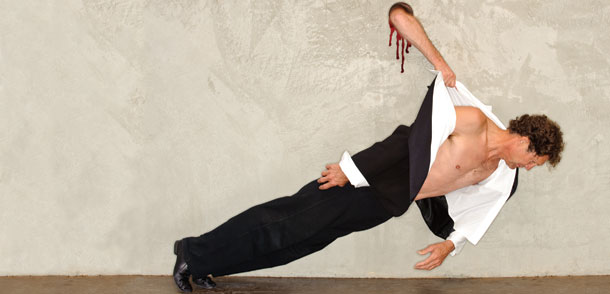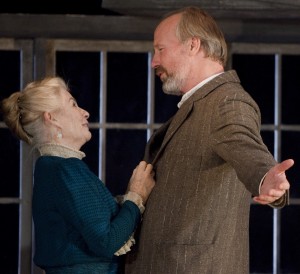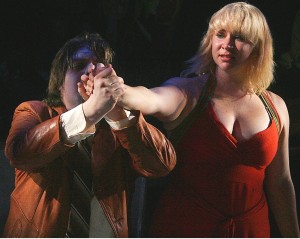
It is a truth universally acknowledged that the world is overflowing with causes deserving of our support. It is a truth personally declared that Mr. Scatter, on occasion, will spotlight certain of these causes in the hope that his friends and readers will give them a second look.
Two such possibilities have presented themselves of late.
The first arrived with news, via Lillian Pitt, that the fine Northwest poet, visual artist and thinker Gail Tremblay needs as many helping hands as she can get. Tremblay, a prominent figure in contemporary Native American art circles and an artist who has been exceptionally generous with her own time and talent, has dealt for several years with a rare disease called lipedema.
 The condition causes a great deal of pain and makes it difficult for her to handle basic daily tasks. Surgical procedures can help immensely, but her American insurance plan has denied coverage. Without insurance, treatment in the U.S. would cost $30,000 a week or more. She can get four weeks of treatment in Germany for between $12,000 and $19,000 plus travel expenses, and has been accepted for treatment to begin Oct. 5. She’s paid 4,000 Euros on account, but because she’s needed to pay caregivers for the past three years, her savings are wiped out.
The condition causes a great deal of pain and makes it difficult for her to handle basic daily tasks. Surgical procedures can help immensely, but her American insurance plan has denied coverage. Without insurance, treatment in the U.S. would cost $30,000 a week or more. She can get four weeks of treatment in Germany for between $12,000 and $19,000 plus travel expenses, and has been accepted for treatment to begin Oct. 5. She’s paid 4,000 Euros on account, but because she’s needed to pay caregivers for the past three years, her savings are wiped out.
Any sort of help, of course, is welcome. But this might be the ideal time to pick up a good piece of Gail Tremblay art. (The piece at top is one of her series of paper weavings inspired by traditional basketry, the basket in the inset photo is made of old film stock from Hollywood depictions of Indian life.) She’s set aside several notable pieces — ones that have traveled the country in various exhibitions — for sale to help pay for her surgery, including some from her fascinating series of film baskets. You can learn more about available pieces and prices here.
Tremblay, who lives in Olympia, Wash., and teaches at The Evergreen State College, is represented in Portland by Froelick Gallery.
*
Opportunity No. 2 comes via Dmae Roberts, the Portland playwright and Peabody Award-winning radio producer, who hosts and produces the weekly arts show Stage and Studio at 11 a.m. Tuesdays on listener-sponsored radio KBOO 90.7 FM.
Mr. Scatter spent a couple of hours at Dmae’s studio/office the other day, taping comments for her upcoming “Oregon Treasures” segment on Artists Repertory Theatre‘s Allen Nause (it’ll air Aug. 17) and in the process talking about her hopes for Stage and Studio.
 In a nutshell, Roberts would like to turn Stage and Studio into an online hub and radio show covering arts in the Pacific Northwest. She’s made a good beginning, and has the chops and smarts to follow through. As print sources of arts news and comment become slimmer and slimmer, we need as many good alternative sources as we can get. You can read about her project here.
In a nutshell, Roberts would like to turn Stage and Studio into an online hub and radio show covering arts in the Pacific Northwest. She’s made a good beginning, and has the chops and smarts to follow through. As print sources of arts news and comment become slimmer and slimmer, we need as many good alternative sources as we can get. You can read about her project here.
To get the project kick-started (it’s independent from KBOO), Roberts is trying to raise $6,000 in donations. She has until Aug. 26 to hit her target, and it’s all or nothing: If she doesn’t get the whole $6,000 in pledges, she won’t take any of it. You can make your pledge here. Think of it as consumer-funded media. And of course, anything you give is tax-deductible.

*
ILLUSTRATIONS, from top:
- Gail Tremblay, “Blanket Dance,” 2005, 3′ x 4′, Arches black and white cover stock and Strathmore Red and gold and silver Japanese. Available through the Stonington Gallery, Seattle.
- Gail Tremblay, “Indian Princess in a White Dress,” 2006, 9 x 7 x 7, 16 mm film, metallic braid. Included in the exhibit “Reimagining the Distaff Toolkit,” traveling throughout the United States until April 2012.
- Dmae Roberts in the radio booth.
- From Dmae Roberts’ “Stage and Studio” Web site.

 I think of this because the big deal in Puddletown this weekend is Saturday night’s opening of Long Day’s Journey Into Night, Eugene O’Neill‘s imperial American classic, at Artists Repertory Theatre. This production has Serious written all over it. A co-production with Australia’s Sydney Theatre Company, it stars occasional Oregonian William Hurt as the destructive Tyrone family patriarch, and it drew sparkling reviews in its recently closed Sydney run. I look forward to it not just because it arrives with stellar recommendations but also because O’Neill was in a very real sense the father of American theater, our first true genius. That he was such a morose son of a bitch was the luck of the draw. France got Moliere, the satiric comedian. England got Shakespeare, the astonishing Everyman. We got Old Bleak House, and few writers have ever done bleak better: O’Neill paints loss in despairingly seductive strokes of love.
I think of this because the big deal in Puddletown this weekend is Saturday night’s opening of Long Day’s Journey Into Night, Eugene O’Neill‘s imperial American classic, at Artists Repertory Theatre. This production has Serious written all over it. A co-production with Australia’s Sydney Theatre Company, it stars occasional Oregonian William Hurt as the destructive Tyrone family patriarch, and it drew sparkling reviews in its recently closed Sydney run. I look forward to it not just because it arrives with stellar recommendations but also because O’Neill was in a very real sense the father of American theater, our first true genius. That he was such a morose son of a bitch was the luck of the draw. France got Moliere, the satiric comedian. England got Shakespeare, the astonishing Everyman. We got Old Bleak House, and few writers have ever done bleak better: O’Neill paints loss in despairingly seductive strokes of love. The second was
The second was  Jesse Kornbluth, editor of
Jesse Kornbluth, editor of  As Kornbluth explains it:
As Kornbluth explains it:
 The condition causes a great deal of pain and makes it difficult for her to handle basic daily tasks. Surgical procedures can help immensely, but her American insurance plan has denied coverage. Without insurance, treatment in the U.S. would cost $30,000 a week or more. She can get four weeks of treatment in Germany for between $12,000 and $19,000 plus travel expenses, and has been accepted for treatment to begin Oct. 5. She’s paid 4,000 Euros on account, but because she’s needed to pay caregivers for the past three years, her savings are wiped out.
The condition causes a great deal of pain and makes it difficult for her to handle basic daily tasks. Surgical procedures can help immensely, but her American insurance plan has denied coverage. Without insurance, treatment in the U.S. would cost $30,000 a week or more. She can get four weeks of treatment in Germany for between $12,000 and $19,000 plus travel expenses, and has been accepted for treatment to begin Oct. 5. She’s paid 4,000 Euros on account, but because she’s needed to pay caregivers for the past three years, her savings are wiped out. In a nutshell, Roberts would like to turn Stage and Studio into an online hub and radio show covering arts in the Pacific Northwest. She’s made a good beginning, and has the chops and smarts to follow through. As print sources of arts news and comment become slimmer and slimmer, we need as many good alternative sources as we can get. You can read about her project
In a nutshell, Roberts would like to turn Stage and Studio into an online hub and radio show covering arts in the Pacific Northwest. She’s made a good beginning, and has the chops and smarts to follow through. As print sources of arts news and comment become slimmer and slimmer, we need as many good alternative sources as we can get. You can read about her project 